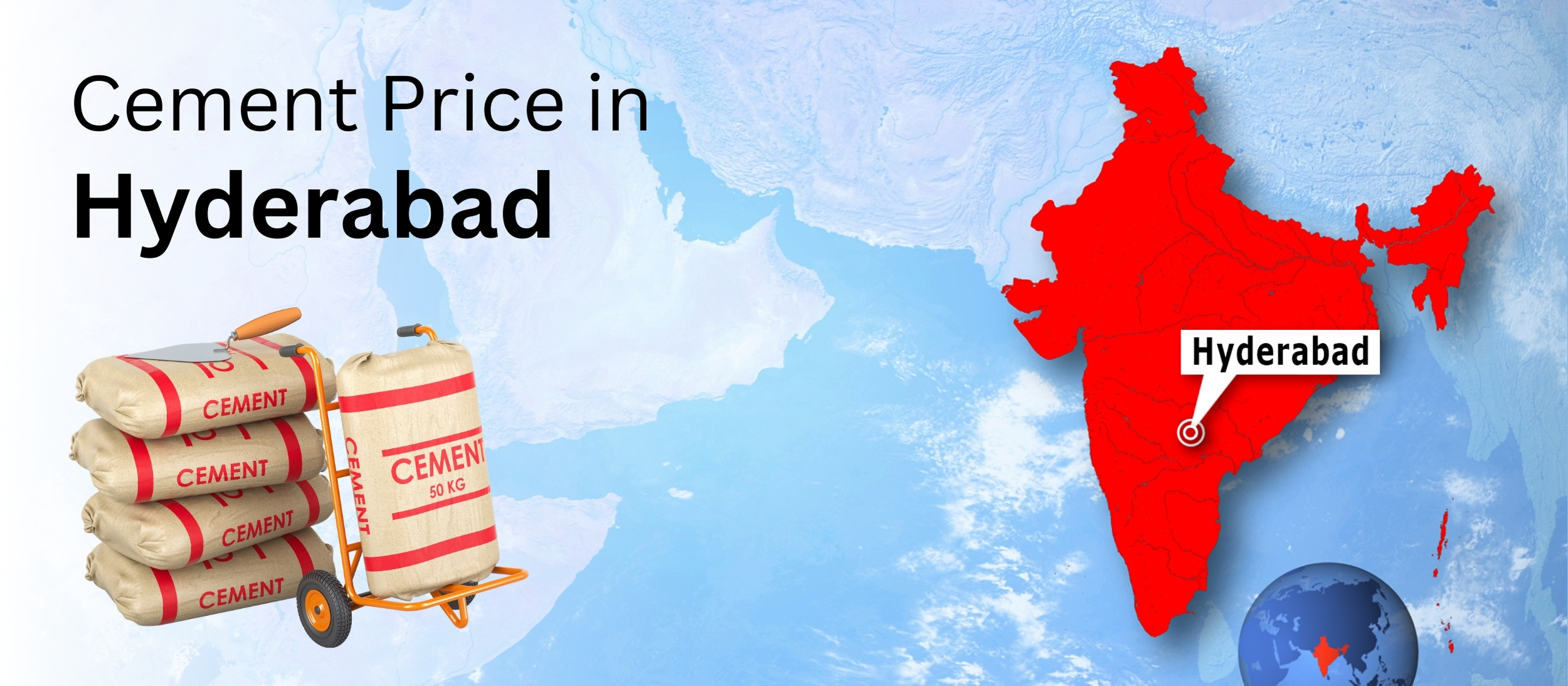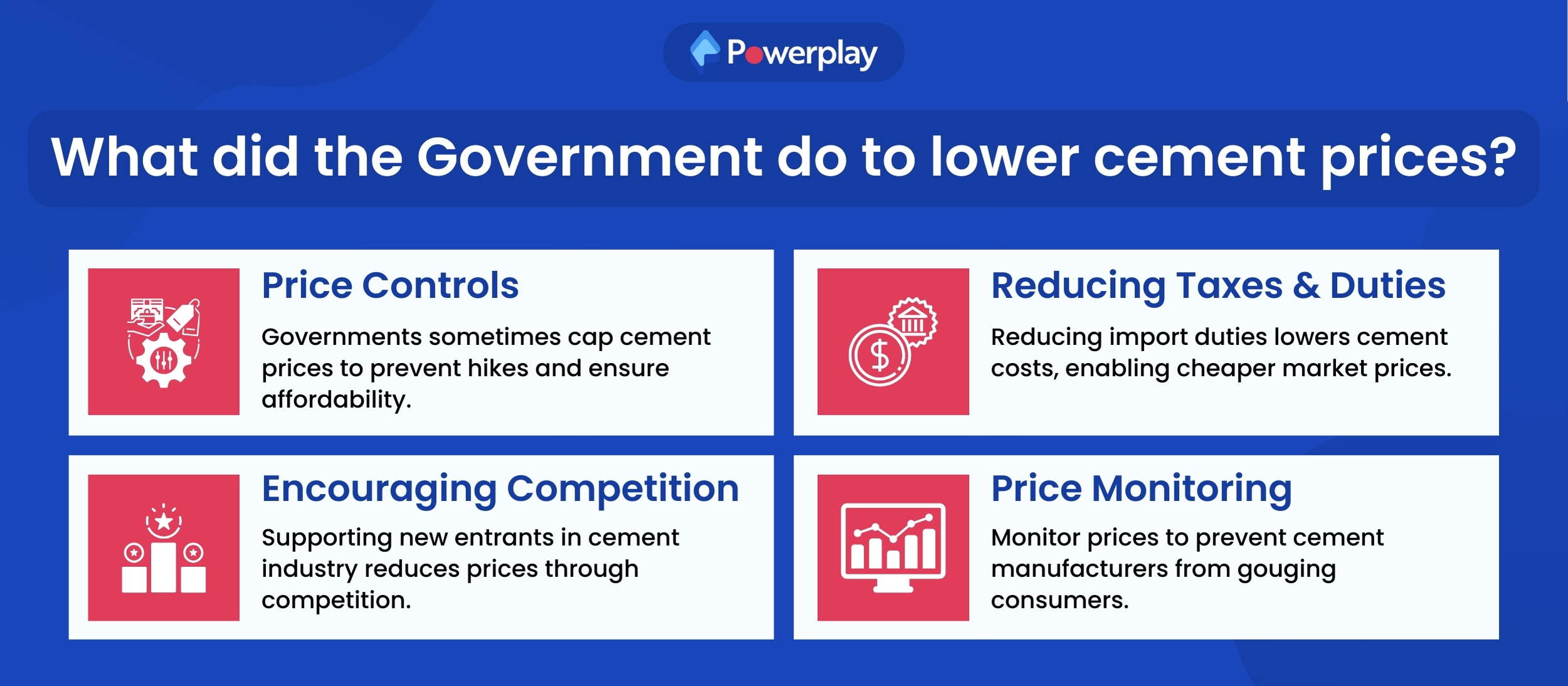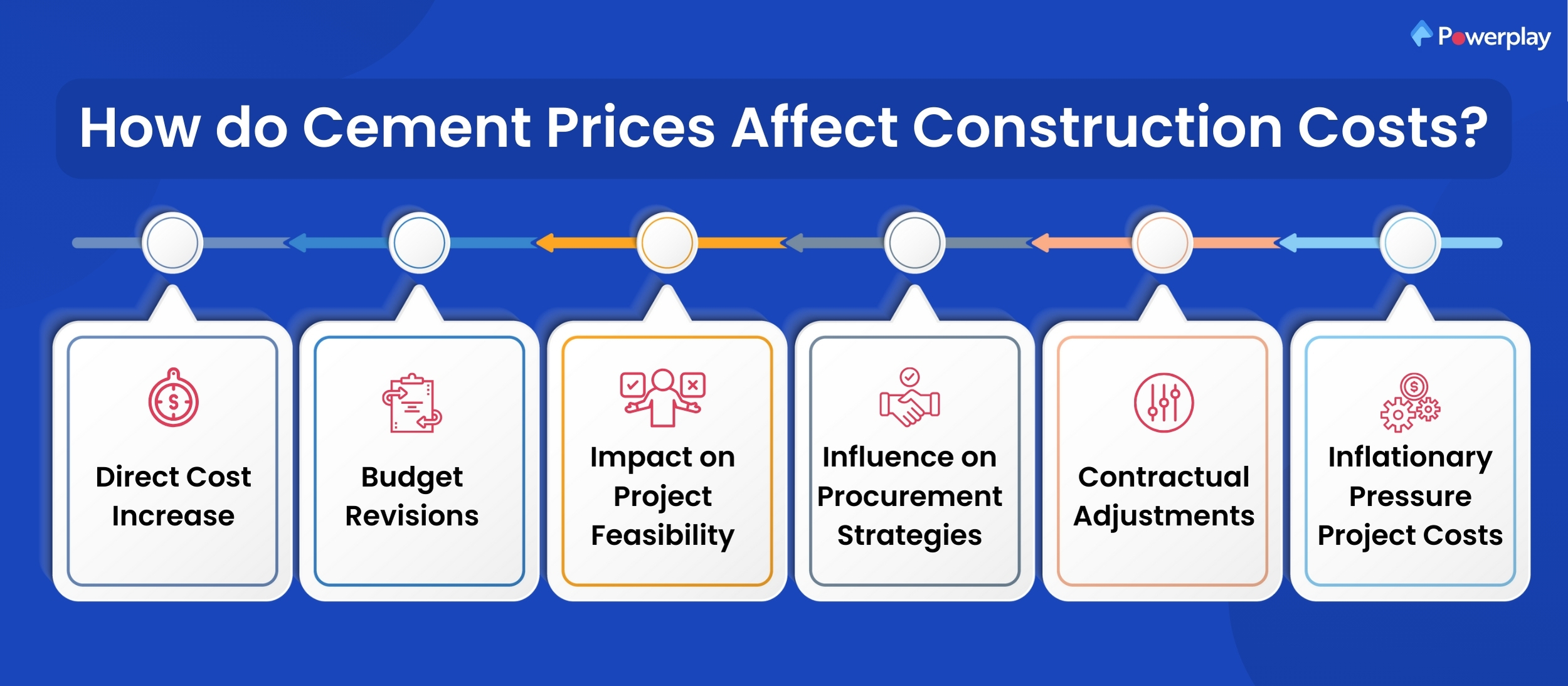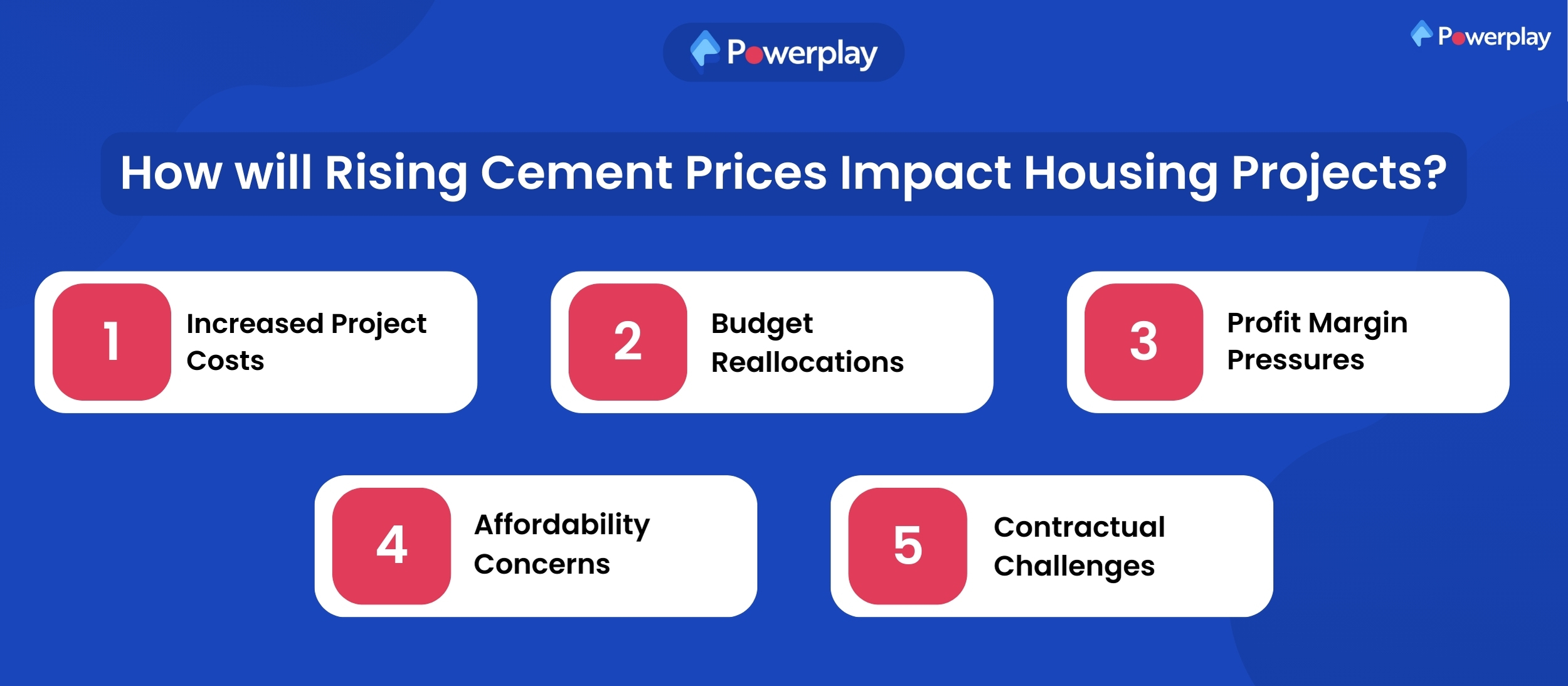Cement Price in Hyderabad: Latest Cement Price List in June 2024
-
Sapna
- June 4, 2024

Keeping an eye on material costs, especially cement, is crucial for budgeting and planning. As we enter June 2024, staying updated with the best cement prices is essential to effectively navigate the challenges of rising construction costs. This blog provides the most recent cement price list in Hyderabad, offering a comprehensive overview of the costs you can expect for various brands and types of cement in different regions. Whether you are a builder, a contractor, or a DIY enthusiast, this guide will help you make informed purchasing decisions for your upcoming projects.

Table of Contents
Cement Price in Hyderabad
Cement prices in Hyderabad have recently seen a noticeable rise, reflecting trends across the broader construction industry. This increase can be attributed to supply chain disruptions and rising raw material costs. Builders, contractors, and homeowners are advised to plan their budgets accordingly to accommodate these changes.
Check out the detailed price table for various brands and grades of best cement available in Hyderabad.
| Cement Brands | Grade | Price |
| Anjani | PPC | Rs. 277 |
| Anjani | OPC | Rs. 310 |
| Deccan | PPC | Rs. 280 |
| Priya | PPC | Rs. 285 |
| Priya | OPC 43 / 53 | Rs. 315 |
| Zuari | PPC | Rs. 295 |
| Zuari | OPC 43 / 53 | Rs. 315 |
| Maha | PPC | Rs. 280 |
| Maha | OPC 43 / 53 | Rs. 310 |
| Dalmia | PPC | Rs. 290 |
| Dalmia | OPC 43 / 53 | Rs. 320 |
| Chettinad | PPC | Rs. 290 |
| Penna | PPC | Rs. 295 |
| Ambuja | PPC | Rs. 320 |
| JSW | Concreel HD | Rs. 310 |
| JSW | OPC 53 | Rs. 330 |
| Ramco | PPC | Rs. 300 |
| Ramco | OPC 43 / 53 | Rs. 320 |
| Ultratech | PPC | Rs. 350 |
| Ultratech | Super | Rs. 360 |
Note: The above pricing list is as of June 25th, 2024 and includes GST. Please note that prices may vary based on the quantity of cement ordered and the exact location of the site.
GST on cement price in Hyderabad
The GST rate on cement in Hyderabad is 28%. This rate applies to various types of cement, including super sulphate, slag, aluminous, and Portland cement, whether coloured or clinked. This is the standard GST rate for most cement products used in construction. Related construction materials like refractory cement, mortars, and concrete attract a GST rate of 18%, while cement-bonded particle board is taxed 12%.
Impact of cement price hike on Hyderabad’s market

A cement price hike in Hyderabad can have several significant impacts on the local market, particularly in the construction sector:
Using cement types resistant to cracks, such as Birla Shakti Cement, can mitigate some of the cost increases by reducing the need for repairs and enhancing long-term durability.
Increased Construction Costs:
Cement is a fundamental material in construction, so any increase in its price directly raises the cost of construction projects. This could affect ongoing and planned projects, potentially increasing project budgets.
Delayed Projects:
With higher material costs, developers and contractors might need more time to ensure project timelines as they re-evaluate budgets and funding. This can lead to extended construction periods and affect the delivery schedules of residential and commercial buildings.
Impact on Housing Affordability:
Increased construction costs due to cement price hikes can lead to higher prices for new homes and other buildings, potentially impacting affordability for end consumers. This could dampen demand in the real estate sector, particularly in the affordable housing segment.
Squeeze on Margins for Contractors and Developers:
Contractors and real estate developers may see their profit margins squeezed unless they pass on the increased costs to buyers. In a competitive market, absorbing these costs might be necessary to maintain market share.
Inflationary Pressures:
Cement is a critical input in various industries beyond construction, such as the manufacture of prefabricated construction materials. A hike in cement prices can contribute to broader inflationary pressures in the economy, affecting multiple sectors.
What did the Government do to bring down the cement prices?

Governments have employed various strategies to mitigate the rise in cement prices, including direct interventions and regulatory adjustments. Some actions include:
- Price Controls: In some cases, governments have set maximum prices for cement to prevent excessive price hikes and ensure affordability for consumers and businesses.
- Reducing Taxes and Duties: Reducing or removing import duties and taxes on cement or raw materials can help decrease overall costs, allowing manufacturers to sell cement at lower prices.
- Encouraging Competition: Promoting competition in the cement industry by supporting new entrants or reducing barriers to market entry can help keep prices down.
- Price Monitoring: Establishing mechanisms to monitor prices and prevent price gouging by cement manufacturers is another method to control price increases.
How do cement prices impact the input cost of construction?

Cement prices significantly impact the input cost of construction projects due to cement’s role as a primary and indispensable material in most construction activities. Many of the cement products used in construction are made in India. Here’s how changes in cement prices can affect construction costs:
Direct Cost Increase:
Since cement is a major component used in constructing buildings, roads, bridges, and a range of other infrastructure structures, any rise in its price directly increases the cost of these projects. Cement is often mixed with different materials to create concrete, so its cost is integral to the overall material.
Budget Revisions:
A rise in cement prices can lead to budget revisions for projects generally with fixed budgets. This might require cutting costs in other areas, reducing the scale or quality of the project, or seeking additional funds to cover the increased costs.
Impact on Project Feasibility:
Significant changes in cement prices can affect the initial feasibility studies of new projects. Increased costs might lead to delays in construction as investors and developers reassess the project’s potential return on investment.
Influence on Procurement Strategies:
Fluctuations in cement prices can lead developers and construction firms to alter their procurement strategies. This might include bulk buying to lock in prices or switching to alternative suppliers offering more competitive rates.
Contractual Adjustments:
For contracts that do not have fixed price clauses, fluctuations in cement prices can lead to increased costs for contractors, which they may need to pass on to clients, leading to renegotiated contract terms.
Inflationary Pressure on Overall Project Costs:
The increase in cement prices contributes to overall inflation in the construction industry. This leads to higher prices for other construction materials as suppliers and manufacturers adjust their prices in response to increased demand and higher input costs.
Associated input cost of constructing a house in Hyderabad
The cost of constructing a house in Hyderabad typically ranges between Rs 1,550 and Rs 2,050 per square foot for residential buildings with standard-quality materials. This estimate can increase for more luxurious or complex designs. Several factors influence these costs, including the materials’ quality, design complexity, and project size. Commercial construction tends to be more expensive, starting from Rs 2,500 per square foot and can go much higher depending on the project specifics.
How will the increase in cement prices affect housing projects?

An increase in cement prices can significantly impact housing projects in the country in multiple ways, such as:
Increased Project Costs: As cement is a significant component in construction, any price hike directly increases the costs of housing projects. This can lead to higher overall expenses for developers and may result in increased sale prices for houses, potentially affecting market demand.
Budget Reallocations and Delays: With higher input costs, developers might need to reassess their financial models, leading to project delays as budgets are adjusted to accommodate the increased costs. In some cases, projects might be temporarily halted if the financial impact is too severe.
Profit Margin Pressures: Developers and contractors could see reduced profit margins without passing the increased costs onto buyers. In competitive markets, absorbing these costs might be necessary to maintain sales, further squeezing margins.
Affordability Concerns: For affordable housing projects, the rise in cement costs could make homes less affordable for people in the target demographic. This could lead to challenges in meeting affordability targets and require additional subsidies or changes in project specifications to keep homes within the financial reach of low and middle-income families.
Contractual Challenges: For projects under existing contracts, sudden increases in cement prices can create disputes over costs, especially if contracts do not allow price adjustments. This might lead to renegotiations or legal challenges, adding to project complexities and delays.
Cement price in Hyderabad: Recent developments
Cement prices in Hyderabad have been marked by significant increases. A notable rise in the price of a cement bag by approximately Rs 60 due to heightened input costs. This increase is primarily driven by the rising prices of raw materials and associated costs. Additionally, the cement industry in Hyderabad has been affected by supply chain disruptions and increased demand from both residential and commercial construction sectors, contributing to the overall price escalation.
In response to the rising cement prices in Hyderabad, several solutions and initiatives have been proposed and implemented to stabilise the market and ensure the sustainability of the construction industry:
Green Cementech 2024 Initiative: Organised by the CII and CMA, this initiative focuses on sustainable cement production and advocates for using alternative fuels and raw materials to reduce environmental impact.
Government and Regulatory Measures: Local authorities are taking steps to monitor and regulate cement pricing, considering measures like price caps and promoting competition to avoid price gouging.
Technological Advancements: Implementation of new technologies, such as geopolymer cement, are being prioritised, as they reduce the carbon footprint and enhance production efficiency.













